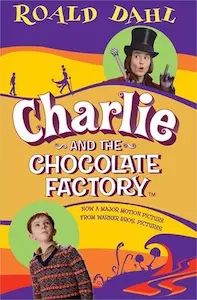Charlie and the Chocolate Factory - Summary
Roald Dahl

Introduction
“Charlie and the Chocolate Factory” by Roald Dahl is a beloved children’s book that has captivated readers for decades. Published in 1964, this whimsical tale takes readers on a magical journey through the eccentric and enchanting world of Willy Wonka’s chocolate factory. Dahl’s imaginative storytelling, witty humor, and memorable characters have made this book a timeless classic.
The Enigmatic Willy Wonka
At the heart of the story is the enigmatic character of Willy Wonka, the eccentric owner of the renowned chocolate factory. Wonka is a reclusive genius who has hidden away from the world, leaving everyone curious about his factory and the secrets it holds. Dahl’s vivid descriptions of Wonka’s factory, with its chocolate rivers, edible wallpaper, and Oompa-Loompas, transport readers into a world of pure imagination.
The Golden Ticket
The story begins with the announcement that five lucky children will be granted a once-in-a-lifetime opportunity to visit Willy Wonka’s factory. The catch? They must find one of the five golden tickets hidden inside Wonka’s chocolate bars. This sets off a global frenzy as children from all over the world search for the coveted tickets. Dahl’s clever use of satire shines through as he humorously portrays the absurdity of the media frenzy and the outrageous behavior of some of the children and their parents.
The Charming Protagonist: Charlie Bucket
Amidst the chaos, we are introduced to the story’s protagonist, Charlie Bucket, a kind-hearted and impoverished boy who lives with his loving but struggling family. Charlie’s character is a stark contrast to the other children who are portrayed as spoiled, entitled, and lacking in manners. Dahl uses Charlie’s humble background to emphasize the importance of values such as gratitude, humility, and family bonds.
The Fascinating Chocolate Factory
As Charlie finds the final golden ticket, he embarks on a grand adventure inside the chocolate factory, accompanied by his beloved Grandpa Joe. Dahl’s vivid descriptions bring the factory to life, from the delectable treats to the fantastical inventions. Readers are enthralled by the whimsical rooms, such as the Inventing Room and the Chocolate Room, where every surface is made of mouth-watering sweets.
The Unforgettable Characters
One of the book’s strengths lies in its memorable characters. Each of the four other children who find golden tickets represents a different flaw or vice, such as greed, gluttony, or selfishness. Augustus Gloop, Veruca Salt, Violet Beauregarde, and Mike Teavee each meet their own comical and often disastrous fates inside the factory. Dahl’s use of exaggeration and humor in depicting these characters adds depth and entertainment to the story.
The Mysterious Oompa-Loompas
Another intriguing aspect of the book is the presence of the Oompa-Loompas, a group of small, orange-skinned workers who assist Willy Wonka. These characters, originally from Loompaland, add an element of mystery and intrigue to the story. Dahl cleverly uses the Oompa-Loompas to convey moral lessons through their catchy songs, which serve as cautionary tales for the misbehaving children.
Themes of Morality and Consequences
Beneath the whimsy and humor, “Charlie and the Chocolate Factory” explores deeper themes of morality and consequences. Dahl uses the misfortunes that befall the misbehaving children as cautionary tales, teaching readers the importance of good behavior and the consequences of greed, gluttony, and selfishness. The book encourages children to reflect on their actions and make positive choices.
Dahl’s Writing Style
Roald Dahl’s writing style is a perfect blend of wit, humor, and imagination. His use of vivid imagery and descriptive language creates a rich and immersive reading experience. Dahl’s witty wordplay and clever puns add an extra layer of enjoyment for readers of all ages. His ability to create memorable characters and engaging dialogue makes the story come alive, capturing the hearts and imaginations of readers.
The Enduring Legacy
“Charlie and the Chocolate Factory” has become a beloved classic that continues to enchant readers of all ages. Its enduring popularity has led to numerous adaptations, including film and stage adaptations, further cementing its place in literary history. The book’s timeless themes, relatable characters, and imaginative world make it a perennial favorite for both children and adults alike.
Conclusion
In conclusion, “Charlie and the Chocolate Factory” is a delightful and enchanting book that has captivated generations of readers. Roald Dahl’s imaginative storytelling, memorable characters, and clever humor make this book an enduring classic. Through its whimsical tale, the book imparts important lessons about morality, consequences, and the value of kindness. “Charlie and the Chocolate Factory” is a must-read for anyone seeking a magical and heartwarming adventure.